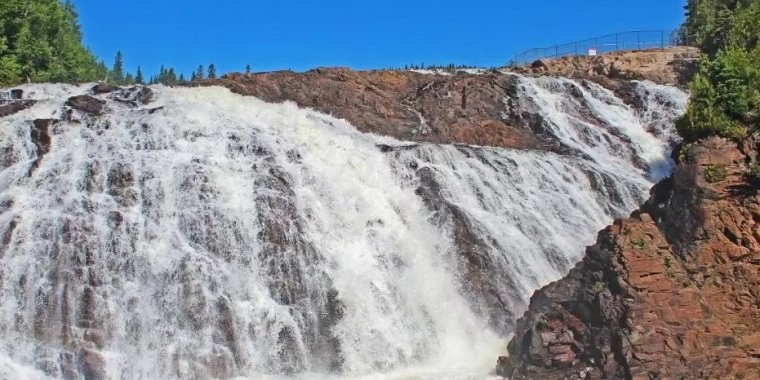| World |
Earth's continents survived billions of years thanks to wind and rain
As continental landmasses rose above sea level to meet wind and rain effects around 3 billion years ago, they underwent a series of geologic processes that helped them stabilize and endure until now, according to a study.

Water flowing over and eroding ancient rock exposed at the Superior Craton in Canada, represented here by the Scenic High Falls in Wawa, Ontario, holds clues to the development of Earth's atmosphere 2.7 million years ago. A study led by Rice University showed the sulfur record held by the rock marked the dramatic change in the planet's atmosphere that gave rise to complex life. Photo: Tom Samworth/www.itsabouttravelling.com
The continental crust is unique among terrestrial planets and makes Earth habitable. About half of all continental crust consists of cratons, some of Earth's longest-lived and most expansive geologic features.
"We studied cratons around the world and found that introducing sedimentary rocks, enriched in heat-producing elements, into the global rock cycle caused a significant boost to the energy budget available to drive the stabilization of continents," said Andrew Smye, a co-author on the study.
Ancient weathering processes concentrated heat-producing elements like uranium, thorium and potassium into sediments on land that were then incorporated into the deep crust, where they melted and underwent chemical processes that stabilized the entire crust.
"Cratons occur all over the globe and have a similar, but not identical, history. They all contain important elements for stabilization, like specific sediments, metamorphism and granite emplacement," said Jesse Reimink, the study's lead author. "The key is to test the timing of these events in each craton individually."
Smye and Reimink, professors at The Pennsylvania State University, tested their model on various Archaean cratons, including the Slave craton in Canada's Northwest Territories, the Superior craton spanning Quebec to northern Minnesota and the Pilbara craton in Western Australia.
"Determining the amount of sediment deep in the crust is the key to testing this model for stabilization," said Reimink. (U.S. National Science Foundation)
YOU MAY ALSO LIKE





